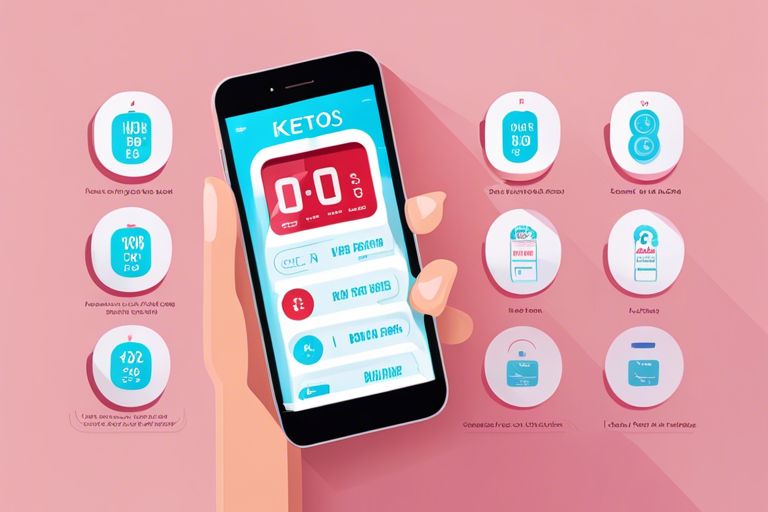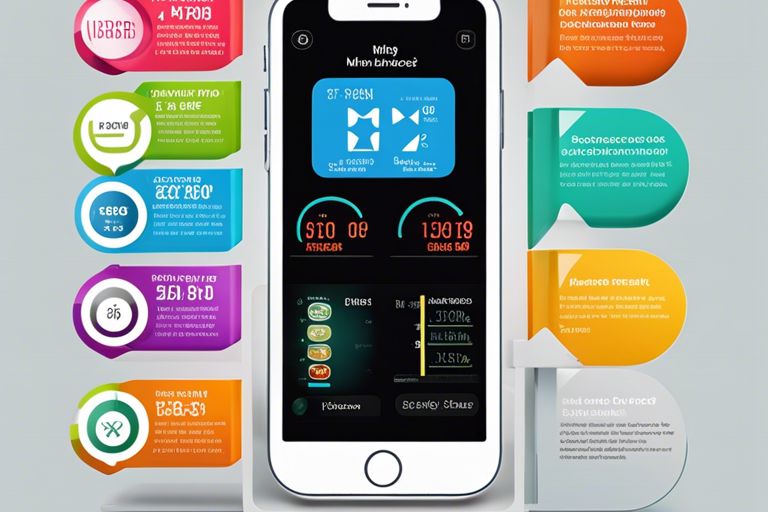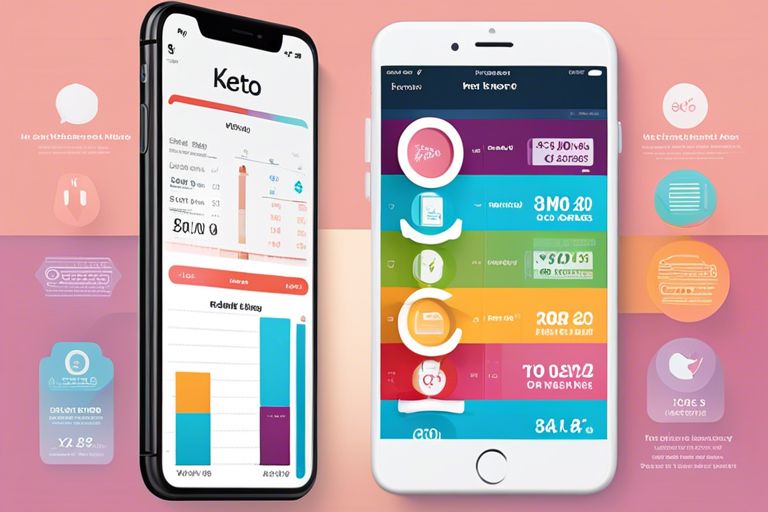Accurately measuring the state of ketosis is essential for those following a ketogenic diet. There are several reliable methods available to determine if your body has entered a state of ketosis. From urine test strips to blood testing meters, there are a variety of products and methods to choose from. In this informative post, we will explore six accurate ways to measure ketosis and provide insights on their effectiveness and reliability. By understanding these methods, individuals can confidently track their progress and make necessary adjustments to achieve their ketosis goals.
Key Takeaways:
- Understanding ketosis: It’s crucial to grasp the concept of ketosis and its significance in the body’s metabolism.
- Utilizing accurate measurement methods: Utilizing accurate ways to measure ketosis, such as blood ketone meters, breath ketone analyzers, and urine ketone strips, is crucial for monitoring progress.
- Consistent monitoring for success: Consistent and regular monitoring of ketosis levels is essential to ensure that one stays on track with their ketogenic diet and reaps its benefits.

Blood Ketone Testing
Clearly, one of the most accurate ways to measure ketosis is through blood ketone testing. This method involves using a specialized meter to measure the level of ketones present in the blood, providing a precise and reliable indication of the body’s ketone production.
Overview of Blood Ketone Meters
Blood ketone meters are a crucial tool for individuals following a ketogenic diet or seeking to monitor their ketone levels for medical reasons. These portable devices use a small blood sample to measure the concentration of beta-hydroxybutyrate (BHB) in the bloodstream, offering a real-time assessment of the body’s ketosis state. The meters typically display the results in millimoles per liter (mmol/L), and some models also include features such as memory storage and Bluetooth connectivity for tracking and sharing data.
Blood ketone meters are available in various models and brands, each with its own set of features and functionalities. It is essential to select a meter that is easy to use, provides accurate results, and is compatible with individual needs and preferences.
How to Interpret Blood Ketone Results
Blood ketone results are typically categorized into different levels to assess the degree of ketosis. A reading of 0.5-1.5 mmol/L is considered low to moderate ketosis, 1.5-3.0 mmol/L indicates a state of nutritional ketosis, and levels above 3.0 mmol/L may suggest excessive ketone production, which can be a concern for some individuals. It is essential to consult with a healthcare professional to determine the appropriate target range for an individual’s specific health and dietary goals.
To ensure accurate interpretation of blood ketone results, it’s crucial to follow the manufacturer’s guidelines for proper meter calibration and usage. Regular calibration and maintenance of the meter, along with consistent testing practices, are essential for obtaining reliable and meaningful ketone measurements.
Breath Ketone Analysis
The measurement of ketones in the breath is one of the accurate ways to determine the level of ketosis in the body. This method involves the use of a breath ketone device, which analyzes the level of acetone in the breath to indicate the production of ketones in the body. The process is non-invasive and provides instant results, making it a convenient option for individuals following a ketogenic diet or seeking to monitor their ketone levels.
An Overview of the Science behind Breath Ketones
When the body is in a state of ketosis, it produces three types of ketone bodies, including acetone. Acetone is a volatile organic compound that is released through the breath, making it detectable through breath ketone analysis. This method is based on the principle that as ketone levels rise in the body, the concentration of acetone in the breath also increases. The breath ketone device measures the levels of acetone to provide an accurate indication of the body’s ketosis status.
Pros and Cons of Breath Ketone Devices
To accurately evaluate the effectiveness of breath ketone devices, it is important to consider the pros and cons associated with their use. The following table outlines the advantages and disadvantages of using breath ketone devices for measuring ketosis.
| Pros | Cons |
| Non-invasive | Potential for variability in readings |
| Instant results | Initial cost of device |
| Convenient for regular monitoring | Requires regular calibration |
Breath ketone devices offer a non-invasive and convenient way to measure ketosis, making them suitable for individuals who prefer a hassle-free method of monitoring their ketone levels. However, it is important to be aware of the potential for variability in readings and the need for regular calibration of the device to ensure accurate results.
Urine Ketone Strips
Now, let’s take a closer look at urine ketone strips, a popular method for measuring ketosis in individuals following a ketogenic diet.
How Urine Ketone Strips Work
One of the most common ways to measure ketosis is through the use of urine ketone strips. These strips contain a special chemical that reacts with the ketones in your urine, producing a color change that indicates the level of ketones present. This method is convenient and affordable, making it a popular choice for those looking to track their ketone levels.
Limitations of Urine Strips
Urine ketone strips can provide a quick and easy way to measure ketosis, but they have certain limitations. One of the main drawbacks is that they only measure the ketones that your body is excreting, not the ones that are being utilized for energy. As a result, the readings from urine strips may not always accurately reflect your true level of ketosis. Additionally, as your body becomes more efficient at utilizing ketones, the amount excreted in your urine may decrease, leading to potentially misleading results.
The limitations of urine strips make it important to use them in conjunction with other methods of measuring ketosis, such as blood ketone meters or breath acetone analyzers, for a more comprehensive understanding of your metabolic state. It’s also important to remember that hydration levels can impact the accuracy of urine strip readings, so it’s crucial to take this into account when interpreting the results.

Clinical Evaluation of Symptoms
After understanding the various methods of measuring ketosis, it is important to consider the clinical evaluation of symptoms. While using devices and tests can provide quantitative data, the presence of certain symptoms can also indicate the state of ketosis in the body.
Signs of Ketosis in the Human Body
Clinical experts can identify signs of ketosis in the human body through a range of symptoms such as increased thirst, dry mouth, frequent urination, and a fruity odor on the breath. Additionally, individuals in ketosis may experience reduced hunger, increased energy levels, and mental clarity as the body adapts to using ketones as a primary fuel source.
The Role of Clinical Expertise in Assessment
With clinical expertise, healthcare professionals can provide a comprehensive assessment of an individual’s ketosis status. This includes evaluating the presence of symptoms, analyzing the results of laboratory tests, and considering the individual’s overall health and dietary habits. Clinical expertise allows for a more holistic approach to measuring ketosis, taking into account the individual’s unique circumstances and potential confounding factors.
It is essential to consult with a healthcare professional to accurately assess and monitor ketosis, especially for those with existing medical conditions or individuals implementing a ketogenic diet for weight management or health reasons. A healthcare provider can offer personalized guidance and support to ensure safe and effective management of ketosis.
Digital Health Applications
Not only have digital health applications changed the way we measure and track ketosis, but they have also brought convenience and accuracy to the process. These applications have made it easier than ever for individuals to monitor their ketone levels and make adjustments to their diet and lifestyle accordingly.
Ketosis Apps and Trackers
For those looking to accurately measure and track their ketosis, there are a variety of apps and trackers available. These digital tools allow individuals to input their ketone measurements, track their macronutrient intake, and monitor their progress over time. Some apps even offer personalized recommendations based on individual goals and preferences, making it easier for users to stay on track and achieve their desired results.
Integration with Other Biomarkers
With the advancement of digital health applications, it is now possible to integrate ketosis measurements with other biomarkers such as blood glucose levels, insulin levels, and metabolic rate. This integration provides a more comprehensive view of an individual’s overall health and can offer valuable insights into the effects of ketosis on various physiological markers.
Plus, by combining ketosis measurements with other biomarkers, individuals can gain a deeper understanding of their body’s response to dietary and lifestyle changes, allowing for more informed decision-making when it comes to optimizing health and wellness.

6 Accurate Ways to Measure Ketosis
Ultimately, there are several reliable methods to accurately measure ketosis, each with its strengths and limitations. Utilizing a combination of blood, breath, and urine tests can provide a comprehensive understanding of one’s ketone levels and metabolism. By implementing these measurements, individuals can effectively track their progress on a ketogenic diet and make informed decisions about their nutritional choices. For a comprehensive guide on how to test ketone levels and what they mean, visit How to Test Ketone Levels and What They Mean.
FAQ
Q: What is ketosis?
A: Ketosis is a metabolic state in which the body burns fat for fuel instead of carbohydrates. This is achieved by following a low-carbohydrate, high-fat diet.
Q: How can I measure my ketosis accurately?
A: There are several ways to measure ketosis accurately, including blood ketone meters, breath ketone meters, urine test strips, and glucose meters.
Q: What is a blood ketone meter?
A: A blood ketone meter is a device that measures the level of ketones in your blood. It is considered the most accurate way to measure ketosis.
Q: How does a breath ketone meter work?
A: A breath ketone meter measures the level of acetone in your breath, which is a byproduct of ketosis. While not as accurate as a blood ketone meter, it is a convenient and non-invasive way to measure ketosis.
Q: Are urine test strips reliable for measuring ketosis?
A: Urine test strips can provide a rough estimate of ketone levels, but they are not as accurate as blood or breath ketone meters. They are more suitable for beginners and may not be as reliable for long-term use.
Q: How do glucose meters help measure ketosis?
A: Glucose meters can indirectly indicate the level of ketosis by measuring blood sugar levels. As the body enters ketosis, blood sugar levels tend to decrease, making glucose meters a useful tool in conjunction with other ketone measurement methods.
Q: Are there other ways to measure ketosis accurately?
A: In addition to the methods mentioned, there are advanced medical tests like the beta-hydroxybutyrate blood test that provide a precise measurement of ketone levels in the body.

Leave a Reply